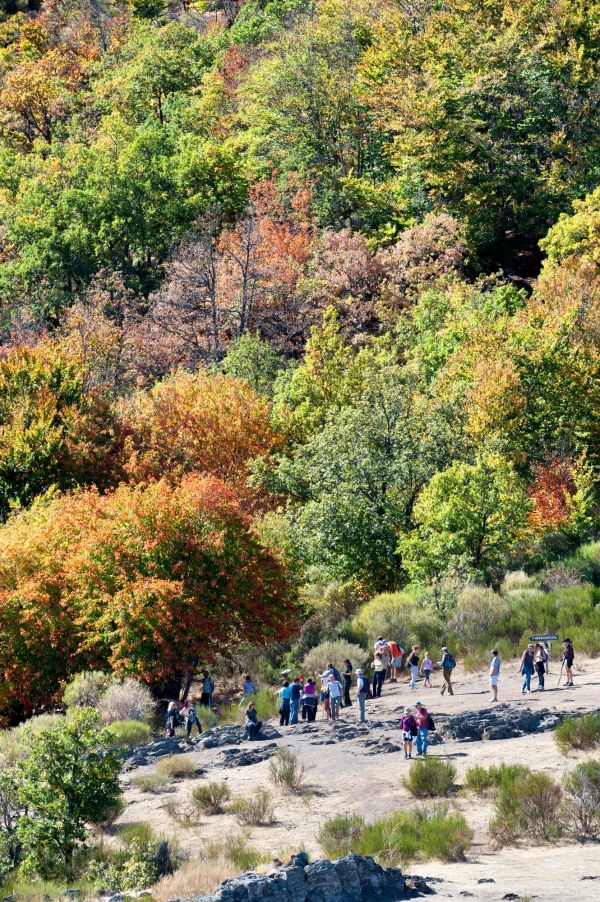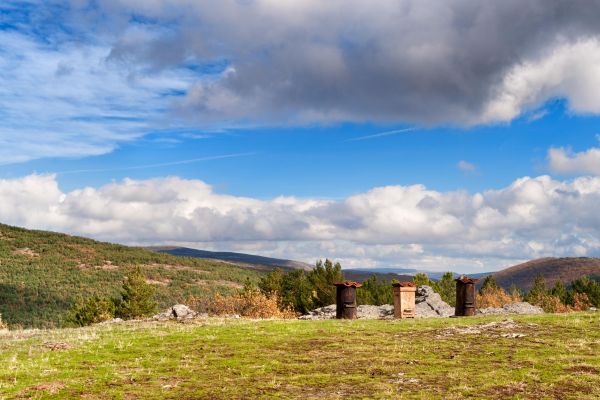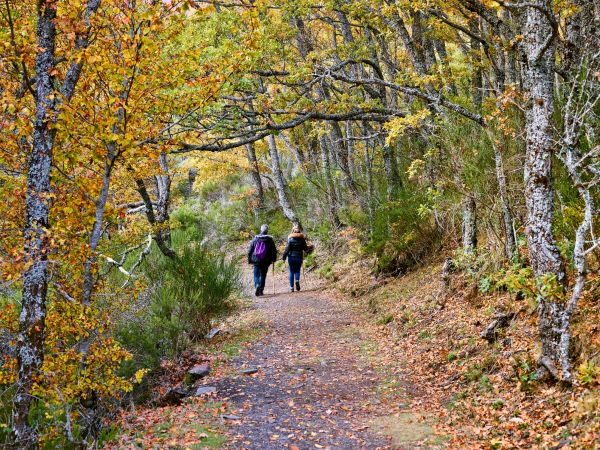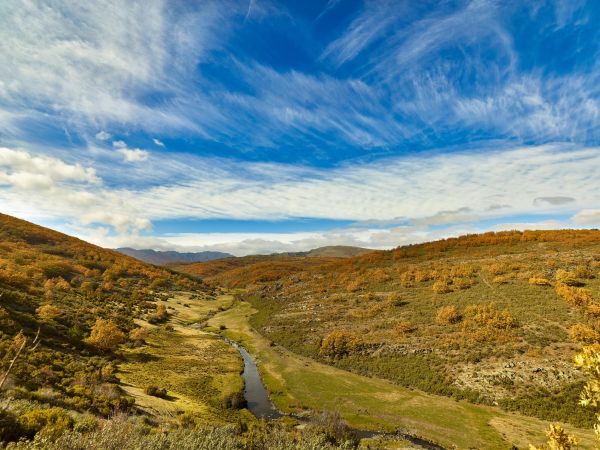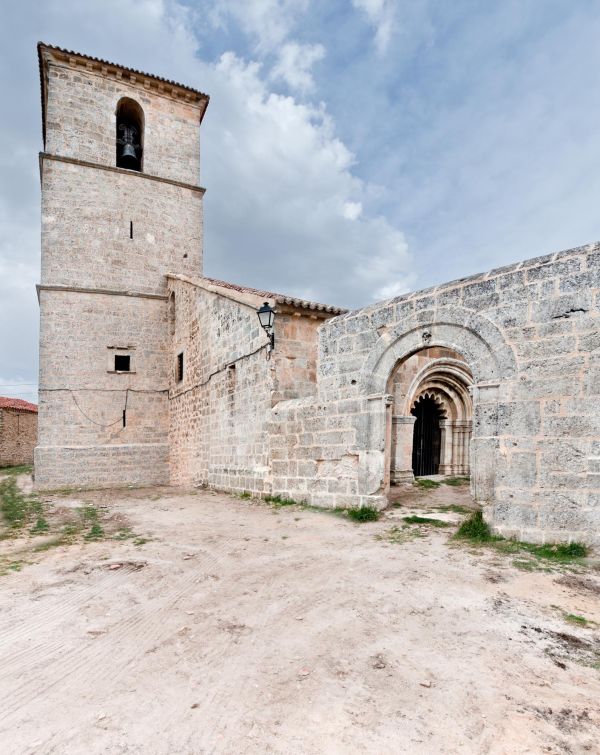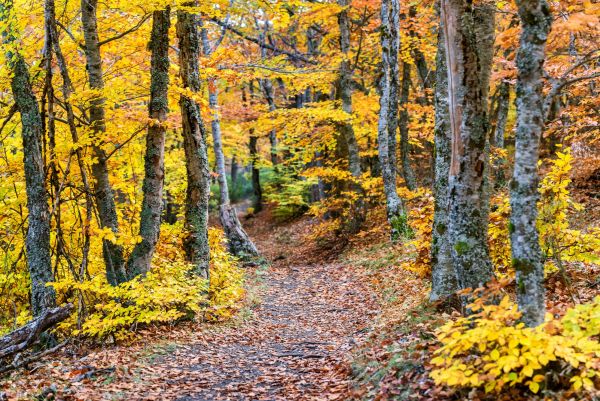Hayedo de Tejera Negra
Guadalajara
Before visiting Hayedo, you should think about two things: the weather forecastand booking a parking space.
Access to Hayedo is sometimes closed due to the weather and without warning, always focusing on the safety of visitors. In autumn and during the festival, you must book a parking space to access the interior car park by car, where the trail begins, 8 km from the Interpretation Centre. We recommend the rest of the year. The car park costs €4 for passenger cars.
You reach Hayedo from the town of Cantalojas. First, we’ll visit the Park’s Interpretation Centre (located 2.5 km from the town), and later we’ll reach the aforementioned Park car park (8 km away). You can also travel the 8 km by foot or on bicycle, and therefore don’t need to reserve a parking space.
Hayedo de Tejera Negra is part of the Sierra Norte de Guadalajara Natural Park, and is therefore a special environmental protection area. However, it is, above all, an extremely beautiful spot.
The changes of colour throughout all seasons of the year make Hayedo very easy on the eye. After a long winter rest period, around seven months, when the trees are without leaves, they explode into life in May with a bright, clear green colour which slowly fades. With autumn, yellow, reddish and brown hues appear, usually culminating in October. From November, the brown carpet of fallen leaves contrasts with the whitened trunks, mosses and lichens; the autumn rains, the wet earth, mushrooms, etc. make autumn the best time to visit in the eyes of many.
El Hayedo is also special because of its setting, in the centre of the peninsula, as beech forests are more typical of the mountains to the north (Picos de Europa, for instance). Its presence in the central region, so far to the south, is due to the fact that it is a forest that was established in times when the climate was colder and wetter than now, and it has been preserved in the valleys with more shade due to certain weather conditions: high precipitation and the absence of summer droughts. It rains a lot to water the beech trees and the steep slopes provide effective drainage to ward off waterlogging. It is said that the beech is a highly demanding tree, which likes to have its head wet and feet dry. In summer, storms are common, with foggy days and low, fresh temperatures. Winters are very cold and tough, with regular snowfall.
However, the place’s beauty is not just due to the beech trees. On our walk, we’ll see oak trees, wild pines, rowan trees, maples, yews or birches, blueberries, junipers and bearberries, which are all protected habitats.
There are two routes for the visit: one on foot and one by bicycle.
The shortest route on foot is called Senda de Carretas: circular, 6 km and involves about 3 hours of walking. This is what most people do, and serves to provide unforgettable memories and photos. It parts from the car park, where there is also an explanatory panel with all the information necessary for our journey.
The other, longer route on foot is called Senda del Robledal, which starts at the Interpretation Centre and covers 17 km. This route sees visitors approach Hayedo on foot and offers sweeping views, features of traditional architecture and takes in the different ecosystems making up this enclave. We recommend using hiking boots or footwear suitable for water.
The bicycle route is called Ruta Río Zarzas and is 21 km long. It is signposted with wooden posts with a red strip and is circular, and starts and ends in the Interpretation Centre.
In the nearby town of Cantalojas, we can marvel at the beauty of one of the destinations included in the Guadalajara Black Architecture zone, and stop to have lunch or rest.
Before visiting Tejera Negra, remember to visit http://agricultura.jccm.es/parques/forms/parqf001.php
http://agricultura.jccm.es/parques/forms/parqf001.php
http://www.aemet.es/es/eltiempo/prediccion/municipios/cantalojas-id19065
May also be of interest to you
Castilla-La Mancha Tourism in 2023. All rights reserved.

 365
365




